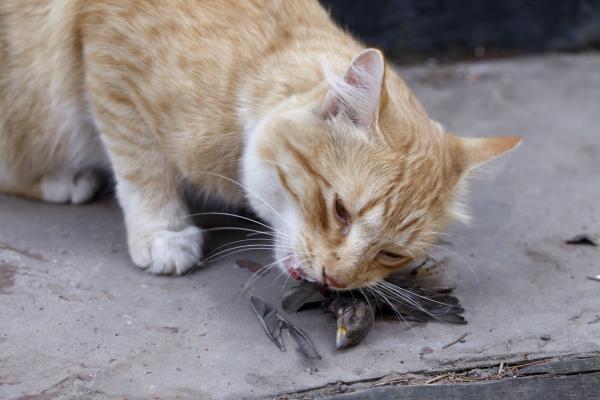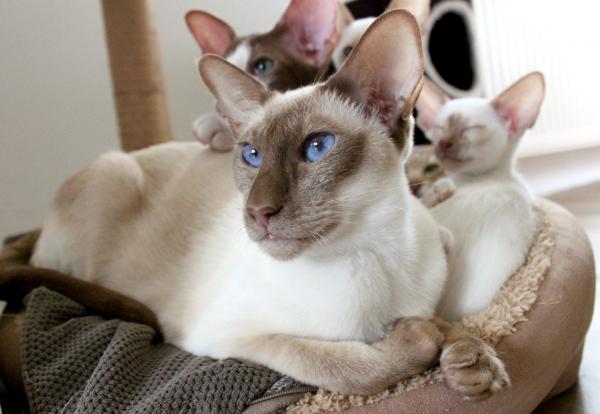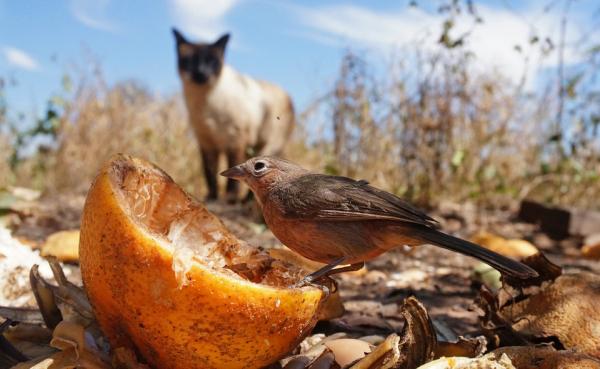Why do cats bring dead animals?

The moment in which a cat brings a dead animal to our house everything changes. We started looking at our feline differently. We get scared. Probably, if this has just happened to you, you will be perplexed and ask yourself the reason behind this fact.
Although it may seem somewhat chilling, the truth is that your cat feels very good and happy to bring you a dead animal. Keep reading this post and discover why cats bring dead animals.
A domestic predator
Approximately 4.000 years ago that began to domesticate cats, however nowadays, we can verify that it is not an especially docile and submissive animal. It has not happened at least in the same way as with other animals.
The instincts of the cat begin to develop before the puppy opens its eyes. Stimulated through different sounds, the kitten responds and interacts to achieve survival.
It is not surprising that the cat has a special instinct for hunting. His dexterity and genetic predisposition make him a skillful hunter who quickly discovers how to catch toys, wool balls or small animals. But nevertheless not all cats kill to its prey. Why?

How do they learn to kill? Do they need to do it?
A routine of relaxed life, food, water, love. All this provides the cat safety and well-being that make him move away in a way from his primary survival instincts. But then; Why do cats hunt dead animals? What need do they have?
According to one study, cats learn the ability to kill their prey from other cats. Usually his mother is who teaches them to kill animals thus ensuring their survival, but it can also be done by another related cat.
Be that as it may, the domesticated cat does not need to hunt for food, for that reason we usually observe two types of behavior: they play with their prey or they give it to us.

Why the cat gives us his prey
As we mentioned in the previous point, the cat can play with his prey or give it to us. Playing with the dead animal has a clear meaning; the cat does not need to feed, so he will enjoy his trophy in another way.
The second case is not so clear. Many people maintain the theory that the dead animal is a gift that professes affection and admiration. But the truth is that there is a second reasoning that indicates that the cat is helping us survive since he knows that we are not good hunters at all.
This second explanation adds that cats, by social custom within a colony, teach each other. In addition, it suggests that castrated females may be more predisposed to “teach” to kill since it is something innate in their nature and that they can only transmit with whom they live.

How to prevent the cat from bringing dead animals
This type of behavior, however unpleasant it may be, it should not be repressed. For the cat it is a natural and positive behavior. It shows us that we are part of your family and for that reason a bad response could generate discomfort and distrust in our cat.
However, we can improve some details of your routine to prevent that from happening, or at least in the current way. There go the tips:
- A home life: avoid that your cat goes outside will be a good measure to avoid giving us dead animals. Remember that keeping it away from the undergrowth and dirt of the streets will prevent you from suffering an infestation by parasites. Something very beneficial for him and for you. Adapting to a home life will be easy if you have everything you need at your disposal.
- Play with your cat: many people do not know the different toys for cats that exist in the market. We have endless possibilities that we must experience with him.
Remember that cats can have some time alone but the main thing that really motivates them is your presence. Get a duster with rope that you can move and encourage your cat to move to hunt it. We guarantee that the game will last much longer.
Do you have a trick to avoid it? An experience that you want to share? Do not hesitate to comment at the end of this article so that other users can help you.

If you want to read more articles similar to Why do cats bring dead animals?, we recommend that you enter in our Curiosities section of the animal world.


